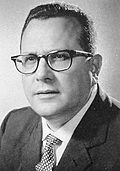| Portrait | Office | Name | Term | Party | Undersecretaries |
|---|
 | Prime Minister | Arnaldo Forlani | 18 October 1980 – 28 June 1981 | | Christian Democracy | Luciano Radi (DC) [a]
Piergiorgio Bressani (DC) [b]
Luigi Giglia (DC) [c]
Francesco Mazzola (DC) [d] |
|
|---|
 | Minister of Foreign Affairs | Emilio Colombo | 18 October 1980 – 28 June 1981 | | Christian Democracy | Costantino Belluscio (PSDI)
Libero Della Briotta (PSI)
Aristide Gunnella (PRI)
Edoardo Speranza (DC) |
 | Minister of the Interior | Virginio Rognoni | 18 October 1980 – 28 June 1981 | | Christian Democracy | Marino Corder (DC)
Angelo Maria Sanza (DC)
Giuseppe Di Vagno (PSI) |
| | | 18 October 1980 – 23 May 1981 | | Christian Democracy | Giuseppe Gargani (DC)
Domenico Raffaello Lombardi (DC)
Francesco Spinelli (PSI) |
| | 23 May 1981 – 28 June 1981 | | Christian Democracy |
 | Minister of Budget and Economic Planning | Giorgio La Malfa | 18 October 1980 – 28 June 1981 | | Italian Republican Party | Lucio Gustavo Abis (DC) |
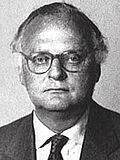 | Minister of Finance | Franco Reviglio | 18 October 1980 – 28 June 1981 | | Italian Socialist Party | Giuseppe Amadei (PSDI)
Francesco Colucci (PSI)
Mario Gargano (DC) |
 | Minister of Treasury | Beniamino Andreatta | 18 October 1980 – 28 June 1981 | | Christian Democracy | Carlo Fracanzani (DC)
Giuseppe Pisanu (DC)
Eugenio Tarabini (DC)
Angelo Tiraboschi (PSI)
Claudio Venanzetti (PRI) |
 | Minister of Defence | Lelio Lagorio | 18 October 1980 – 28 June 1981 | | Italian Socialist Party | Pasquale Bandiera (PRI)
Amerigo Petrucci (DC)
Martino Scovacricchi (PSDI) |
 | Minister of Public Education | Guido Bodrato | 18 October 1980 – 28 June 1981 | | Christian Democracy | Antonino Drago (DC)
Franca Falcucci (DC)
Claudio Lenoci (PSI)
Giacomo Samuele Mazzoli (DC) |
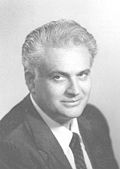 | Minister of Public Works | Franco Foschi | 18 October 1980 – 28 June 1981 | | Christian Democracy | Francesco Fossa (PSI)
Giorgio Santuz (DC) |
 | Minister of Agriculture and Forests | Giuseppe Bartolomei | 18 October 1980 – 28 June 1981 | | Christian Democracy | Mario Campagnoli (DC)
Fabio Fabbri (PSI)
Anselmo Martoni (PSDI) |
 | Minister of Transport | Rino Formica | 18 October 1980 – 28 June 1981 | | Italian Socialist Party | Antonio Caldoro (PSI)
Giosi Roccamonte (PSDI)
Elio Tiriolo (DC) |
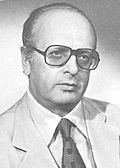 | Minister of Post and Telecommunications | Michele Di Giesi | 18 October 1980 – 28 June 1981 | | Christian Democracy | Giorgio Bogi (PRI)
Pino Leccisi (DC)
Gaspare Saladino (PSI) |
| | | 18 October 1980 – 20 December 1980 | | Christian Democracy | Bruno Corti (PSI)
Maria Magnani Noya (PSI)
Francesco Rebecchini (DC) |
| | 20 December 1980 – 28 June 1981 | | Christian Democracy |
 | Minister of Health | Aldo Aniasi | 18 October 1980 – 28 June 1981 | | Italian Socialist Party | Bruno Orsini (DC) |
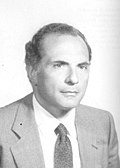 | Minister of Foreign Trade | Enrico Manca | 18 October 1980 – 28 June 1981 | | Italian Socialist Party | Baldassare Armato (DC)
Roberto Palleschi (PSI) |
 | Minister of Merchant Navy | Francesco Compagna | 18 October 1980 – 28 June 1981 | | Italian Republican Party | Giuseppe Caroli (DC)
Giovanni Nonne (PSI) |
 | Minister of State Holdings | Gianni De Michelis | 18 October 1980 – 28 June 1981 | | Italian Socialist Party | Giuseppe Antonio Dal Maso (DC)
Giuseppe Tocco (PSI) |
 | Minister of Labour and Social Security | Franco Foschi | 18 October 1980 – 28 June 1981 | | Christian Democracy | Angelo Castelli (DC)
Giuseppe Miroglio (DC)
Sisinio Zito (PSI) |
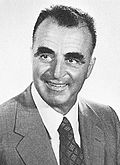 | Minister of Cultural and Environmental Heritage | Oddo Biasini | 18 October 1980 – 28 June 1981 | | Italian Republican Party | Rolando Picchioni (DC) |
 | Minister of Tourism and Entertainment | Nicola Signorello | 18 October 1980 – 28 June 1981 | | Christian Democracy | Enrico Quaranta (PSI) |
|
|---|
 | Minister for Parliamentary Relations
(without portfolio) | Antonio Gava | 18 October 1980 – 28 June 1981 | | Christian Democracy | |
 | Minister of Public Function
(without portfolio) | Clelio Darida | 18 October 1980 – 28 June 1981 | | Christian Democracy | Francesco Quattrone (DC) |
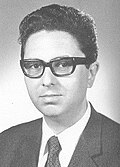 | Minister of Regional Affairs
(without portfolio) | Roberto Mazzotta | 18 October 1980 – 28 June 1981 | | Christian Democracy | |
 | Minister for Extraordinary Interventions in the South
(without portfolio) | Nicola Capria | 18 October 1980 – 28 June 1981 | | Italian Socialist Party | |
 | Minister for the Coordination of Community Policies
(without portfolio) | Vincenzo Scotti | 18 October 1980 – 28 June 1981 | | Christian Democracy | |
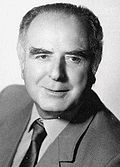 | Minister for the Coordination of Scientific and Technological Research
(without portfolio) | Pier Luigi Romita | 18 October 1980 – 28 June 1981 | | Italian Socialist Party | |
















